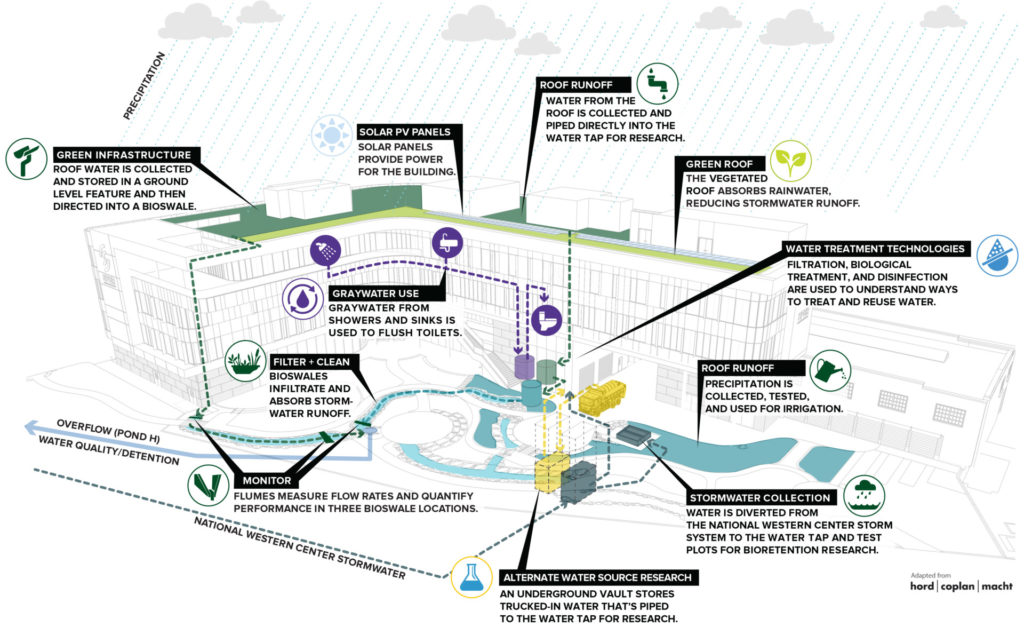
This diagram illustrates the research activity that will happen at the Water TAP lab in the Hydro building at CSU Spur (Photo courtesy One Water Solutions Institute).
In a building dedicated to all things water is a first-of-its-kind lab dedicated to developing innovative ways to clean and reuse humanity’s most precious resource.
The Water Technology Acceleration Platform (Water TAP) lab is housed in the newly opened Hydro building on the CSU Spur campus. Here, a team of researchers led by CSU Civil and Environmental Engineering Professor Sybil Sharvelle will test a variety of water treatment technologies on six different sources.
It’s part of a variety of programming inside Hydro by the One Water Solutions Institute.
The lab’s indoor and outdoor spaces won’t be fully operational until later this spring, but Sharvelle sat down with SOURCE to offer a glimpse of what will happen at Water TAP in the coming months.
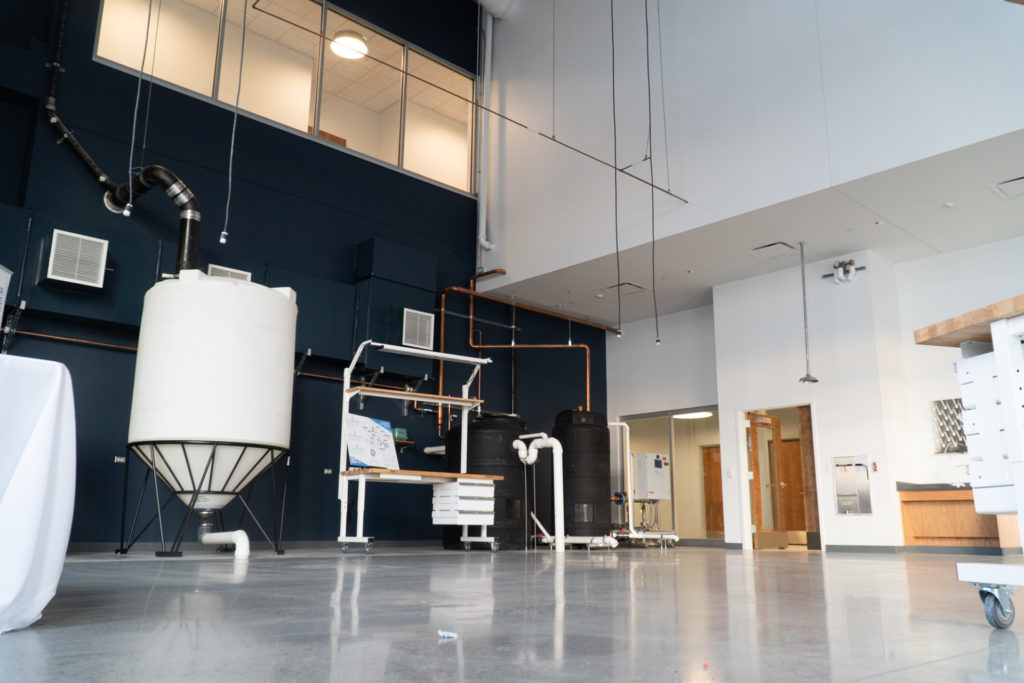
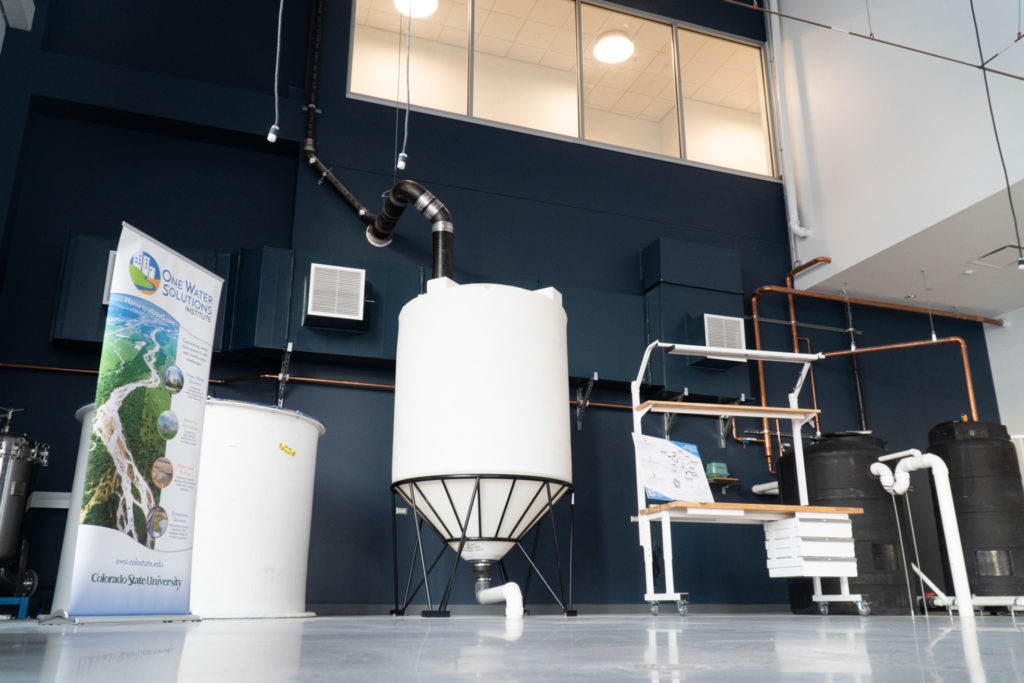
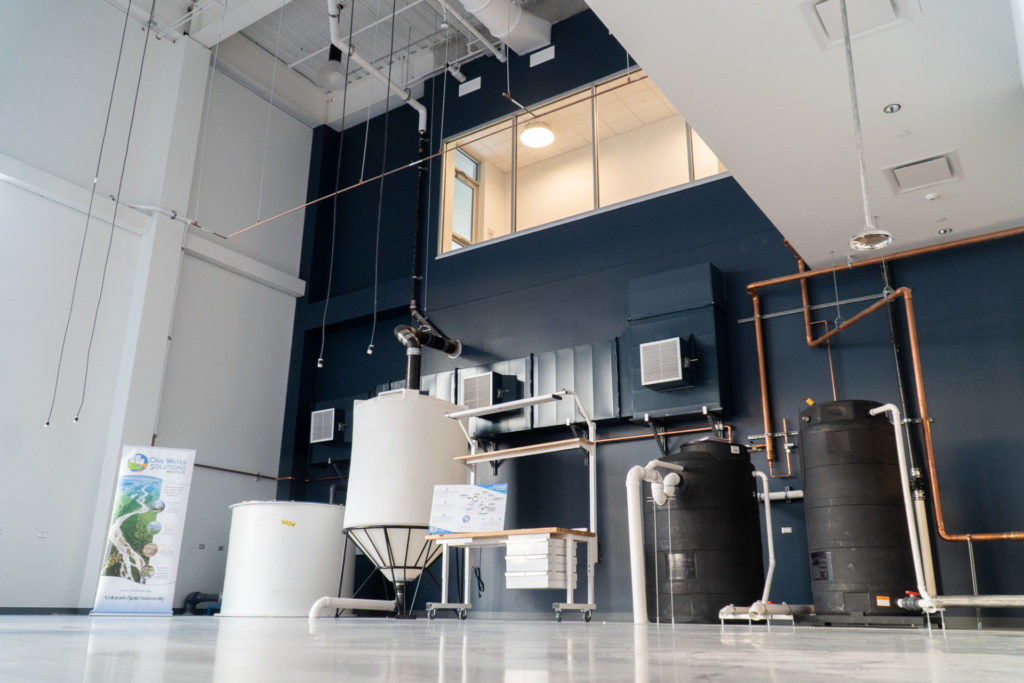
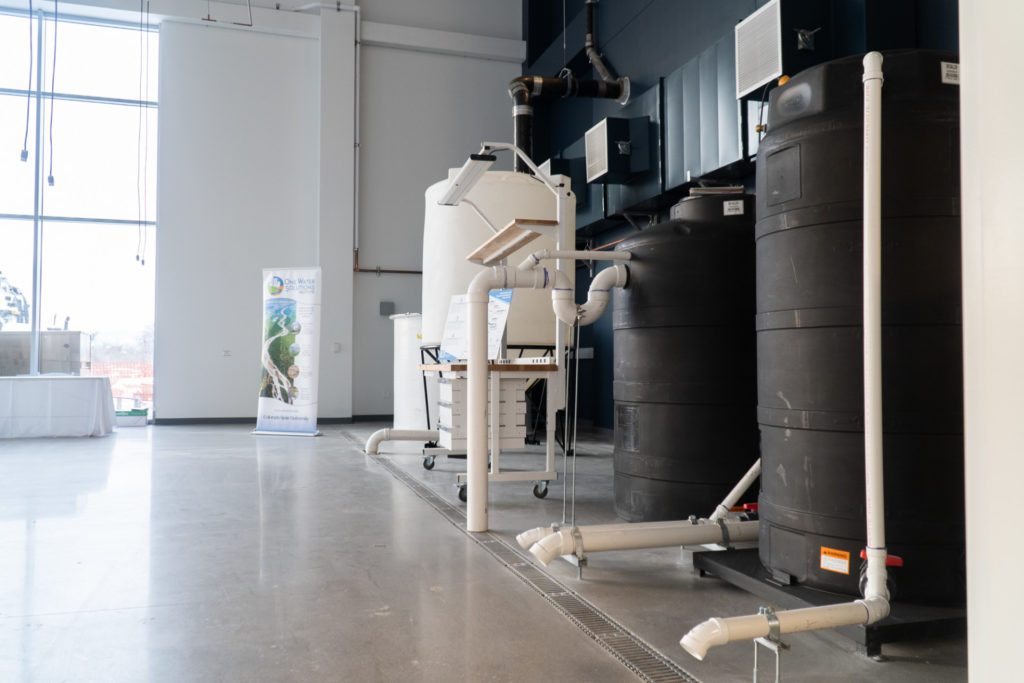
SOURCE: What are the six types of water sources that will be used at the lab?
Sharvelle: Those sources are stormwater, graywater, roof runoff, wastewater, river water and water that is actually trucked in from a variety of different sources, which could encompass everything from hydrofracking waste to agricultural runoff to various industrial sources.
Hydro is the only building nationally – and maybe internationally – that has access to this many types of water. This is truly a unique facility, and something that we’ve envisioned for a decade.
The space has been designed to accommodate systems that process nearly 1,000 gallons per day of each source of water.
What happens after all this water gets to the lab?
We have tanks where the water is stored, and can pump it through a variety of different treatment systems. Those systems could include physical and chemical-based systems (e.g., membrane filtrations or ultraviolet treatment) as well as nature-based solutions. We can even test constructed wetlands that actually have plants incorporated in a growth media.
What’s a constructed wetland?
These are a lot like actual wetlands, where we’ll dig out a space for the water in the form of ponds where we grow plants that can be very effective for treatment.
For example, storm runoff from Hydro’s roof could be collected and diverted into these ponds, and later used for irrigation.
The backyard of the Hydro facility will actually have multiple flexible plots where we can test nature-based solutions.
It’s also unique in that the facility is on the edge of the South Platte River, and we have the ability to test and treat water directly from this source.
Let’s take a bigger picture look at the research that is happening at Water TAP. What types of problems is this trying to solve?
We are trying to make use of local water sources so we can reduce the demand on imported and freshwater sources, like the Colorado River.
We’re figuring out ways to leave water in the environment and instead make use of water sources like stormwater, graywater and roof runoff – all of which are readily available in urban areas.
Of course, different water has different applications, and water used for flushing toilets doesn’t need to undergo the same treatment as water that’s used for drinking.
The whole purpose of the lab is to enable the testing of technology to move technology development and policy forward.